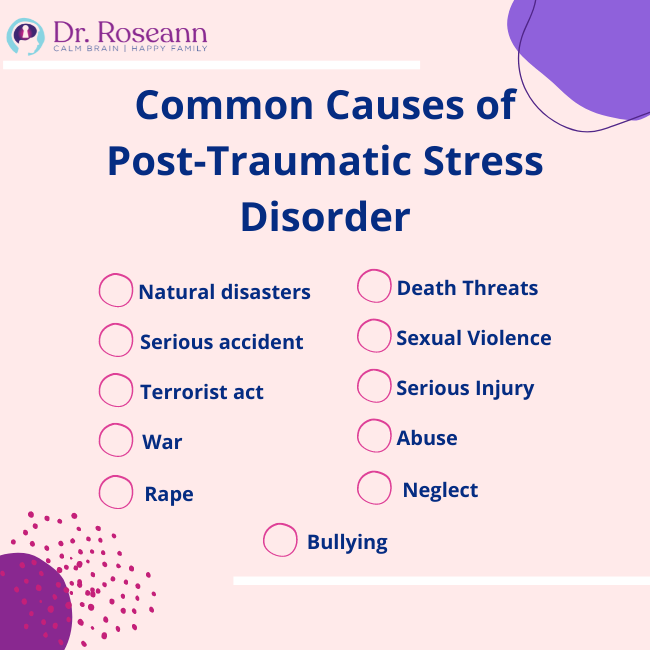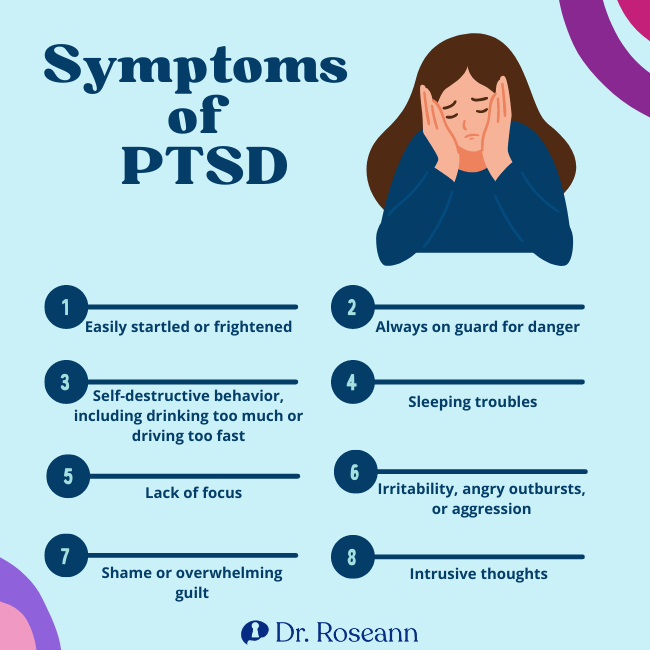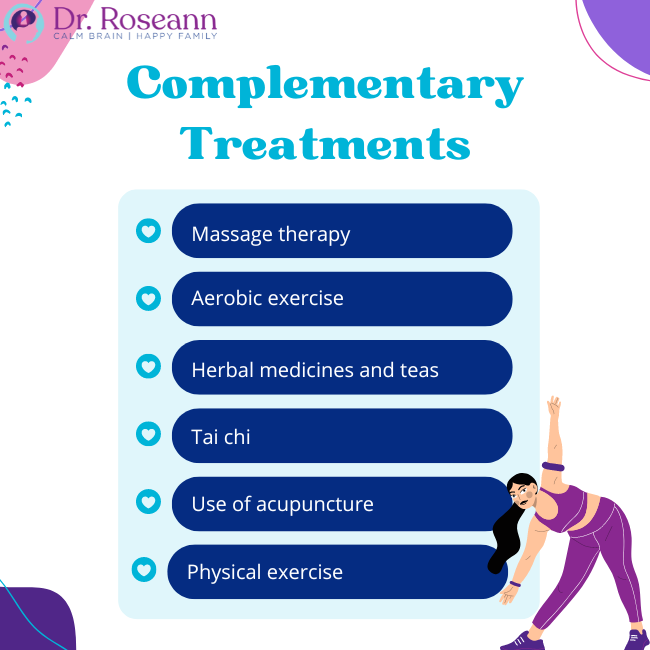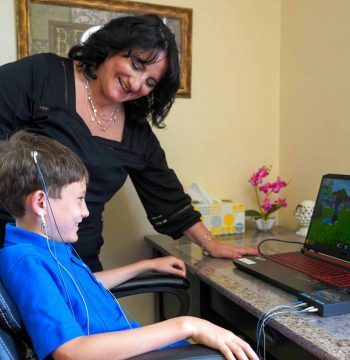It improves detoxification and reduces inflammation.
In the coming-of-age film “Perks of Being a Wallflower,” young Charlie fell into a depression, causing him to isolate and only interact with his family for company for a long-time. Alongside depression, Charlie was revealed to be experiencing post-traumatic stress disorder.
He experienced debilitating sadness and intrusive thoughts and everyday was hard for him.
Trauma can haunt the mind and body causing us to react or not react to seemingly benign events or sensory information. Calming the brain is an integral part of healing trauma. In the film, Charlie sought treatment to release the trauma he had experienced.
Post-traumatic Stress Disorder
Post-traumatic Stress Disorder or PTSD is a psychiatric disorder that occurs in people who have been through a traumatic event(s).
It is common among military veterans who experience the trauma of war. Other terms for PTSD used for veterans include “shell shock” during World War l and “combat fatigue” after World War II.
However, Post Traumatic Stress Disorder can happen to anyone regardless of age, gender, and culture. Common causes include:
- Natural disasters
- Serious accident
- Terrorist act
- War
- Rape
- Death threats
- Sexual violence
- Serious injury
- Abuse
- Neglect
- Bullying

PTSD affects approximately 3.5 percent of American adults yearly. One in 11 people will be diagnosed with PTSD in their lifetime, with women twice as likely to go through PTSD, as they are more likely to be victimized in patriarchal cultures.
In the US, Latinos, African Americans, and American Indians are three ethnic groups with higher occurrences of PTSD.
Patients with PTSD experience intense, disturbing flashbacks of a past traumatic event long after the event has ended. They may experience negative thoughts and feelings, as well as nightmares. These activations can make daily life challenging, as the nervous system gets stuck in a flight, fight or freeze mode.
The symptoms of PTSD are comparable to the symptoms of substance use disorders.
Symptoms of PTSD
The symptoms of trauma look different in every person and most certainly look different in kids versus adults.
PTSD Symptoms include:
- Easily startled or frightened
- Always on guard for danger
- Self-destructive behavior, including drinking too much or driving too fast
- Sleeping troubles
- Lack of focus
- Irritability, angry outbursts, or aggression
- Shame or overwhelming guilt
- Intrusive thoughts

Other symptoms may include weight gain or chronic pain or unresolved chronic medical conditions, as trauma gets stored within the body.
PTSD can co-occur with mood disorders, such as bipolar disorders, major depressive disorder, or disruptive mood disorder. One can also have generalized anxiety due to an overactive nervous system.
Relationships with others can be affected by PTSD in many ways. People with PTSD may feel detached or estranged from other people. They may avoid situations or people that remind them of the traumatic event. Finally, they may exhibit strong reactions to completely ordinary things, such as a loud noise or an accidental touch.
A PTSD diagnosis requires exposure to a traumatic event. The experience may be direct or indirect, such as learning about the violent death of a close friend or experiencing a community tragedy.
It can also stem from repeated exposure to horrible details, such as police officers being confronted with child abuse cases or witnessing violence.
Treatment of PTSD
PTSD should be addressed so that the trauma sufferer can foster meaningful relationships and a better quality of life. A holistic approach encompassing cognitive therapy, breathing techniques, and mind-body practices may produce significant improvements.
#1 Neurofeedback
Neurofeedback is an evidence-based treatment for numerous mental health concerns, including PTSD. It calms the activated brain of a person with PTSD so they can process the trauma without activation.
Neurofeedback begins with a QEEG brain mapping that looks at the functioning of common brainwave frequencies, including Delta Waves, Theta Waves, Alpha Waves, and Beta Waves. Brain wave patterns on a QEEG Brain Map show us exactly what areas are overactivated and those that are underactive for a person with PTSD.
Typically, a PTSD brain has hyperconnected brain communication, which is behaviorally reflected in stuck or looping thoughts. This brain wave pattern is also associated with panic attacks, common in those who have experienced trauma.
During the brain mapping, your provider can see the regions where the brain is overactive or underactive. The brain regions can be trained, and frequencies can be reinforced to increase or decrease, matching the optimal level.
EEG Neurofeedback works by reinforcing desired brain waves through the use of a computer that gives rewards when the subconscious brain regulates. Within seconds, the brain regulates, but several sessions are needed for the brain to learn a healthier combination of brain waves. Most people need two to three sessions a week for six or more months for the fear hijacked brain to calm down and stop involuntarily reacting to everyday things.
Neurofeedback works on a deep level, training the subconscious brain to get into a more focused and calm state. That means one can concentrate more efficiently by learning to produce brain waves associated with focus and ease anxiety by increasing our calm.
This non-invasive, evidence-based brain wave retraining is a powerful alternative to medications without side effects. Over time, the brain learns to regulate and calm itself and decrease trauma activations.
Neurofeedback is used to treat a variety of conditions. Research has found it to successfully treat ADHD, executive functioning, anxiety disorders, OCD, and PANS/PANDAS.
The world-renowned trauma physician, Bessel van der Kolk, found Neurofeedback after working with 9/11 survivors and is a big proponent of the therapy for alleviating trauma symptoms. Learn more about Neurofeedback and how it helps to calm the brain.
#2 PEMF Therapy
Pulsed Electromagnetic Therapy or PEMF therapy enhances cell-to-cell communication, which influences multiple functions within the body and brain.
If cells aren't “talking,” the body's cognitive and physical functions suffer. Intercellular communication helps the body adapt and regulate processes to foster wellness and fight cell deterioration and disease.
PEMF stimulates cells and generates very small microcurrents that run along nerve pathways, increasing alkalization, ATP production, intercellular communication, metabolic processes, oxygenation, and optimized cell membrane potential.
PEMF results in:
- Cells regeneration
- More well regulated emotions
- Less depressive symptoms
- Lower stress levels
- Less inflammation
- Less oxidative stress
- Restoration of depleted adrenal and other endocrine gland functions
- Robust immune responses
Many have turned to PEMF therapy as a way to reduce anxiety, OCD, and depression and mitigate pain resulting from chronic conditions. PEMF supports mental health in three ways:
- It helps the body go into a relaxed parasympathetic state.
- It improves cellular communication.
- It improves detoxification and reduces inflammation.

Learn more about PEMF and how it helps reduce mental health symptoms.
#3 Positive Parenting
Parenting is hard, and despite what we see on social media, no one is a perfect parent. Raising a child can be stressful, but having a child with mental health struggles can be overwhelming. It can be even more challenging when your child behaves differently, and you feel like you're being judged by others.
There are two things to keep in mind.
First, the most important thing to remember is that blame will not help you or your child.
Science has come a long way. There are numerous studies on integrative wellness treatments that work and positive parenting techniques show us that what we say to our child and how we say it can have a tremendous impact on your child for the better.
Reinforcing desired behaviors shapes the behaviors you want to see in your child. Positive parenting is all about reinforcement and breaking the bickering cycle.
Secondly, know that it's going to be okay.
If you're reading Dr. Roseann's blog, you are in the right place to begin your journey to mental wellness. Dr. Roseann has surveyed the research for you.
For behavior to change, it is important to reinforce the behavior you want to see for at least 30 days. So don't give up and stick with the plan!
#4 Art Therapy and Journaling
Creative pursuits such as art and writing release tension and allow self-expression in a calming and pleasurable manner.
Some people living with PTSD may avoid people or fear judgment. Art and writing provide a safe space where one can express themselves without fearing judgment and share their work when they are ready in the future.
Research shows us that art generally improves well-being among individuals. Aesthetic appreciation affects our cognitive and emotional states to foster physical and psychological well-being.
At the same time, these activities regulate the nervous system. With trauma activation, one must work hard to calm the brain, so it is important to add lifestyle activities that counter sympathetic nervous system activation.
#5 Guided Meditation
Meditation is an evidence-based way to calm the nervous system that is easy and accessible for kids and adults. Not only does meditation change the nervous system from a stressed sympathetic dominant state to a calm parasympathetic dominant state.
Meditation improves brain connectivity, which is the brain's ability to talk to itself and regulate. When the brain is regulated, one can pay attention, think, and take action. In the case of PTSD, the brain is in a fear-activated, survival mode state, which means doing even simple tasks can be challenging.
We know through research that in as little as 40 days, if you do ten or more minutes of meditation daily, you can make lasting changes to your brain!
Mediating can be as easy as tuning in to Spotify or YouTube for numerous guided meditations. Some are made for specific purposes: to relax, comfort, assure, affirm, and encourage.
#6 EFT Tapping
EFT (Emotional Freedom Technique) is a 5-minute stress relief technique that can come in handy during stressful periods or trauma activations.
EFT tapping borrows principles from the 5,000-year-old Traditional Chinese medicine that balances yin and yang (light and darkness) in the human body for self-healing. The meridians in EFT Tapping are the same as the Chinese acupressure points and work to regulate all the systems in the brain and body.
EFT tapping is a marriage of time-tested self-healing techniques and modern psychology. This simple method entails tapping along the meridians while reciting statements that disarm negative thought patterns and beliefs.
Using your fingertips, you can tap your face, head, and neck while relaxing and focusing on addressing a specific discomfort to reduce stress and anxiety.
Clinical trials worldwide report EFT tapping can lower depressive symptoms by 41%. EFT treats various conditions, including trauma, pain, and anxiety.
Tapping relaxes the body, and the words of acceptance and affirmation promote self-assurance and shift one's focus from denial and tension to clarity and self-healing.
To lower feelings of stress and anxiety, learn how to do EFT Tapping.
#7 Essential Oils
Essential oils complement any PTSD treatment plan. Natural scents exude nature's healing energy and reduce our stress levels, replacing worries with comfort and relaxation.
Essential oils can be defused, taken with food, or applied to the skin with carrier oils such as coconut oil.
The scent of essential oils stimulates the olfactory system, the part of the brain that is connected with our sense of smell.
Essential oil molecules enter the nose and mouth, pass through the lungs, and reach the brain and other parts of the body — carrying soothing sensations that evoke feelings of security.
Complementary Treatments

The following complementary therapies go well with clinical therapies such as Neurofeedback and PEMF and support one's healing process:
- Massage therapy
- Aerobic exercise
- Herbal medicines and teas
- Tai chi
- Use of acupuncture
- Physical exercise
Citations:
The Tapping Solution (2022), Tapping for Depression
https://www.thetappingsolution.com/blog/research-proves-eft-effective-treatment-depression/
TMS and Brain (2021), HEALING PTSD USING THE ALPHA THETA NEUROFEEDBACK PROTOCOL
https://www.tmsbrainhealth.com/healing-ptsd-using-the-alpha-theta-neurofeedback-protocol/
Always remember… “Calm Brain, Happy Family™”
Are you looking for SOLUTIONS for your struggling child or teen?
Dr. Roseann and her team are all about solutions, so you are in the right place!
There are 3 ways to work with Dr. Roseann:
You can get her books for parents and professionals, including: It’s Gonna Be OK™: Proven Ways to Improve Your Child’s Mental Health, Teletherapy Toolkit™ and Brain Under Attack: A Resource For Parents and Caregivers of Children With PANS, PANDAS, and Autoimmune Encephalopathy.
If you are a business or organization that needs proactive guidance to support employee mental health or an organization looking for a brand representative, check out Dr. Roseann’s media page and professional speaking page to see how we can work together.
Dr. Roseann is a Children’s Mental Health Expert and Therapist who has been featured in/on hundreds of media outlets including, CBS, NBC, FOX News, PIX11 NYC, The New York Times, The Washington Post,, Business Insider, USA Today, CNET, Marth Stewart, and PARENTS. FORBES called her, “A thought leader in children’s mental health.”

She is the founder and director of The Global Institute of Children’s Mental Health and Dr. Roseann Capanna-Hodge. Dr. Roseann is a Board Certified Neurofeedback (BCN) Practitioner, a Board Member of the Northeast Region Biofeedback Society (NRBS), Certified Integrative Medicine Mental Health Provider (CMHIMP) and an Amen Clinic Certified Brain Health Coach. She is also a member of The International Lyme Disease and Associated Disease Society (ILADS), The American Psychological Association (APA), Anxiety and Depression Association of America (ADAA) National Association of School Psychologists (NASP), International OCD Foundation (IOCDF) International Society for Neurofeedback and Research (ISNR) and The Association of Applied Psychophysiology and Biofeedback (AAPB).
© Roseann-Capanna-Hodge, LLC 2023
Disclaimer: This article is not intended to give health advice and it is recommended to consult with a physician before beginning any new wellness regime. *The effectiveness of diagnosis and treatment vary by patient and condition. Dr. Roseann Capanna-Hodge, LLC does not guarantee certain results.













